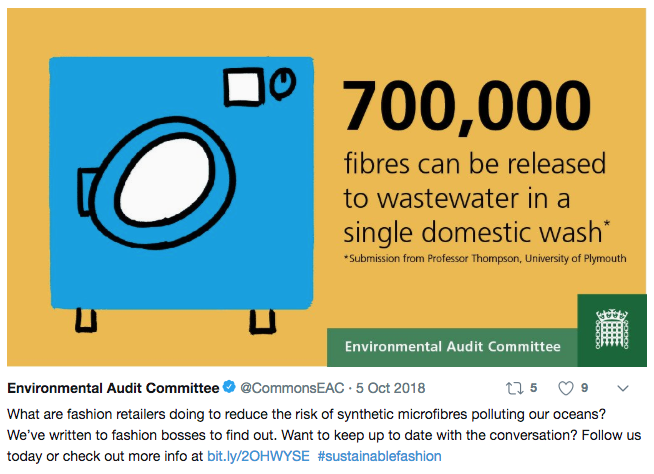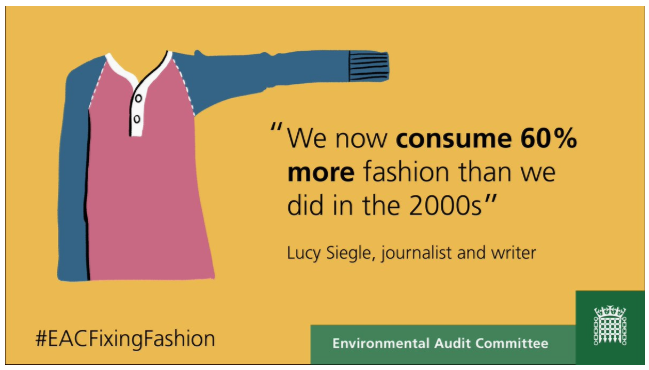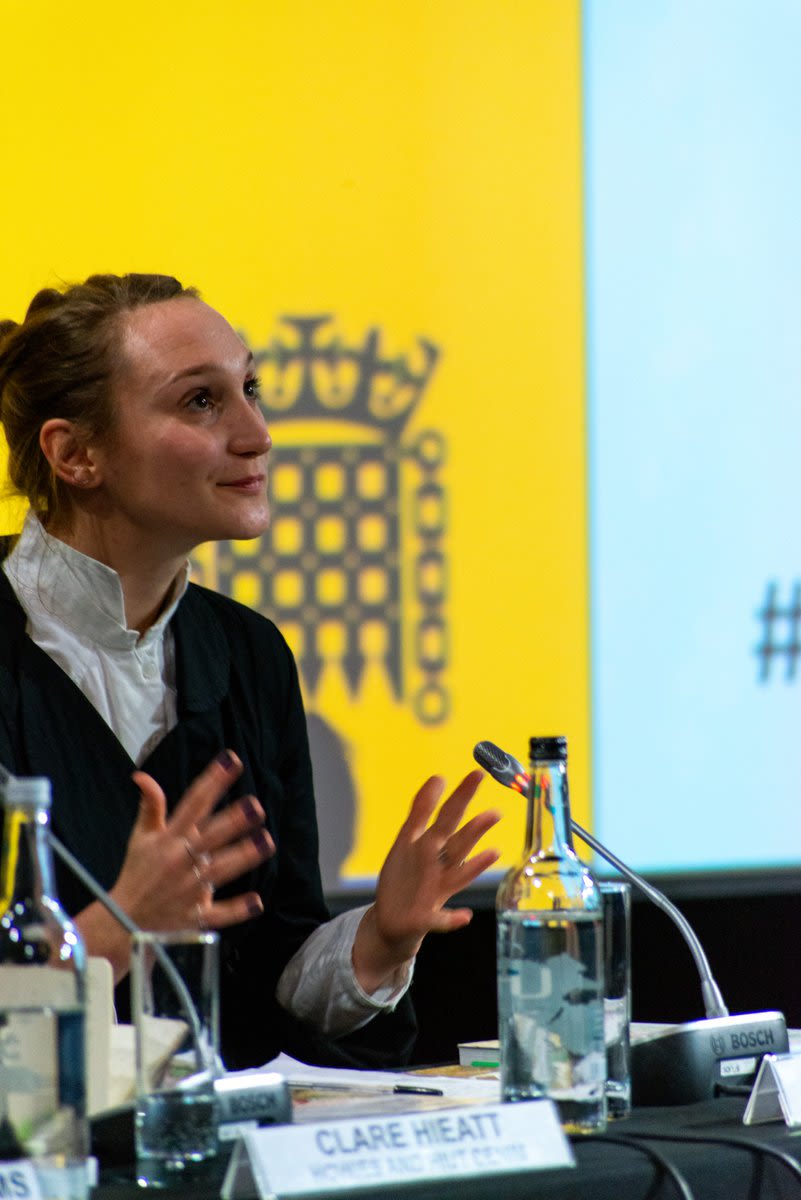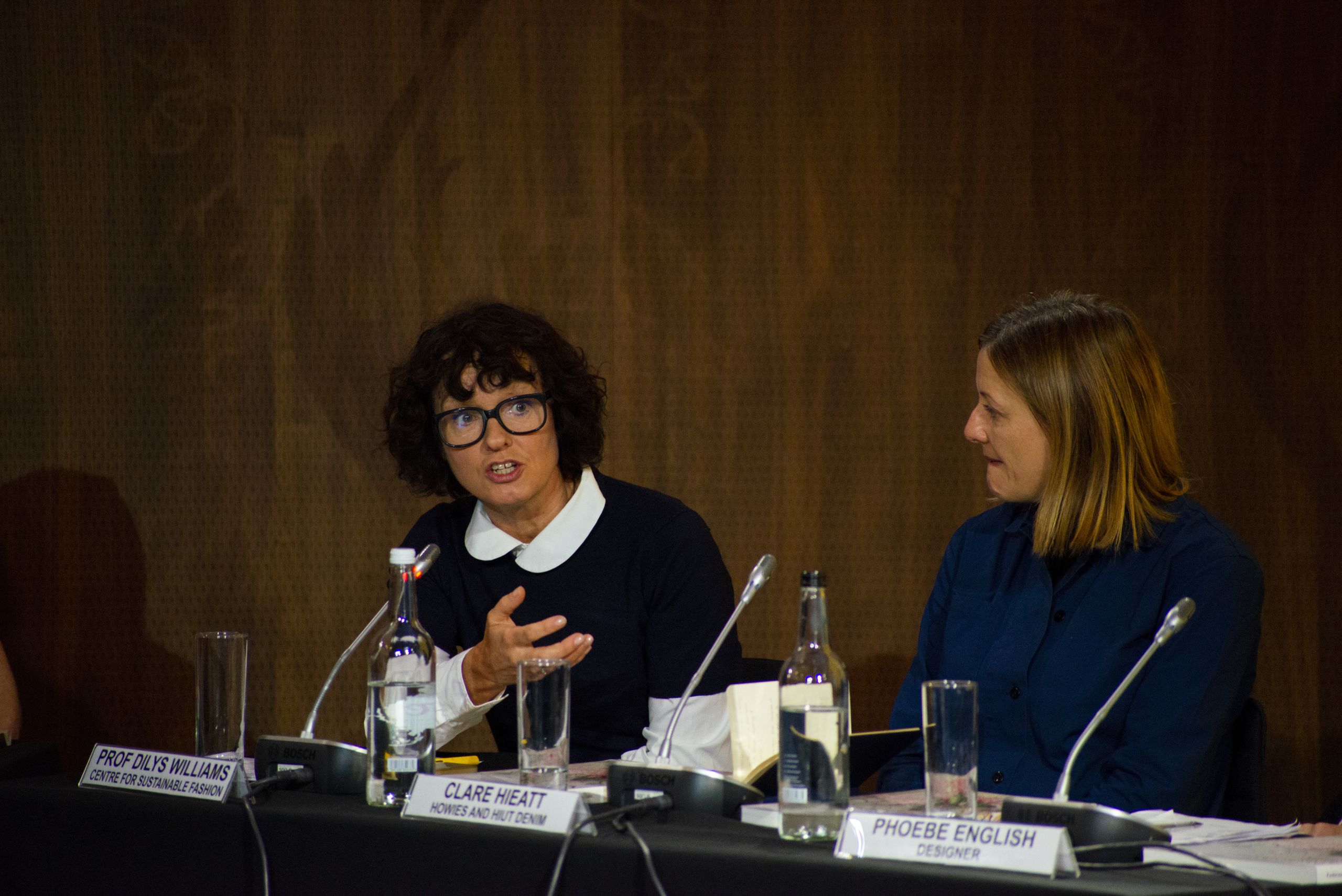The fashion industry must pay to clean up its waste
We look at the costs to the environment and the potential solutions

The way we make, use and throwaway our clothes is unsustainable.
The fashion industry is growing constantly, the demand for newer cheaper clothes is making the ecological crisis we face worse. And we, the Environmental Audit Committee wanted to know what needed to change.
Launching our investigation in June 2018 we have
- heard from experts from across the industry
- held the largest ever public evidence session with 300 attendees
- written to major UK retailers for their explanations
This is what we heard
The problem:
5 ways fashion is damaging the planet

1. Forced labour and other illegal labour practices
Forced labour is used to pick cotton in two of the world’s biggest cotton producing countries, Turkmenistan and Uzbekistan. Labour exploitation is also taking place in the UK. ‘Made in the UK’ should mean workers are paid at least the minimum wage.
But we were told it is an open secret that some garment factories in places like Leicester are not paying the minimum wage. This must stop.

2. Synthetic fibres shedding plastic particles
Most synthetic fibres are made from polyester which is now used in around 60% of our garments. The vast majority of synthetic fibres come from virgin plastics which means according to one academic analysis, a polyester shirt has more than double the carbon footprint of a cotton shirt.
Once made into garments synthetic fibres also shed plastic particles. Trillions of tiny pieces of plastic are accumulating in the world’s oceans, harming marine life and entering the food chain.

3. Excessive water use in the production of garments
Globally, the fashion industry consumes an estimated 79 billion cubic metres of fresh water annually. The growing and production of fibres consumes the greatest quantity of water. Water is also used when dyeing, finishing and washing clothes.
Therefore high volumes of water containing hazardous chemicals are being discharged into rivers and water courses causing water scarcity and risk to life in developing countries.

4. Growing consumption and demand for newer, faster fashion
Fashion is big business in the UK. We buy more clothes per person in the UK than any other country in Europe. This consumption has risen significantly in the last 10 years and is projected to rise globally by 63% by 2030 from 62 million tons today to 102 million tons—equivalent to more than 500 billion additional T-shirts.

5. Large scale clothes wastage
Around 300,000 tonnes of textile waste ends up in household black bins every year, consumption of new clothing is estimated to be higher in the UK than any other European country.
Waste clothes are then sent to landfill or incinerators. Less than 1% of material used to produce clothing is recycled into new clothing at the end of its life. Meanwhile, retailers are burning new unsold stock merely to preserve their brand.
The Evidence:

Concerns have been raised throughout the inquiry that the current ‘fast fashion’ business model is encouraging over-consumption and generating excessive waste.
We asked the experts for their take on the industry's problems and what solutions they suggested might work best.

The Designer
"The overproduction of ‘fast’ fashion which will never be purchased or used and the insane speed which the sector churns out new designs almost every week means that the never-ending production of cheap fashion which is poorly made and will last only a few weeks and then be thrown away, has made our sector a monstrous disposable industry."

The Influencer
"A useful way of thinking about it is when we talk about the Paris agreement and carbon emissions, and we set a baseline of 1990, whatever we need to get the emissions down to, we should think about this problem in that way. If we use 2000 as baseline, we should be doing everything we can to reduce consumption to 2000 levels because that would solve a lot of problems."

The Academic
"We had to make it viable economically for people, for businesses and customers to repair and reuse textiles. Repairing an item can often be more expensive than buying a new one, because we do not fully cost the environmental and social impacts of clothing production."
The Solution:
5 things the Government must do to fix the problem

We want to see a thriving fashion industry in the UK that provides decent work, inspires creativity and contributes to the economic success of the UK. The fashion industry’s current business model is unsustainable, especially with growing populations and rising levels of consumption across the globe.
To combat the main issues we have made a list of suggestions to the Government, here are the top recommendations
1. To ensure the rights of workers in the UK and abroad
The Government should publish a publicly accessible list of all those retailers required to release a modern slavery statement.
2. To combat the pollution caused by synthetic fibres
Fashion retailers should test new synthetic garments for fibre shedding and publish figures.
3. To reduce the excessive consumption of water
We recommend that the Government reforms taxation to reward fashion companies that design products with lower environmental impacts and penalise those that do not.
4. To reduce the wastage caused by the industry
The Government should make fashion retailers take responsibility for the waste they create. A charge of one penny per garment should be placed on retailers and producers to pay for better clothing collection and recycling in the UK.
The Government should ban incinerating or landfilling unsold stock that can be reused or recycled.
5. To reduce the rate of fashion consumption
The Chancellor should use the tax system to shift the balance of incentives in favour of reuse, repair and recycling to support responsible companies. The Government should follow Sweden’s lead and reduce VAT on repair services.

The government must now respond to our report
Our report, Fixing fashion: clothing consumption and sustainability (PDF), was published on 19th February 2019, and the Government has two months to respond to our recommendations.
Detailed information from our inquiry can be found on our website.
If you’re interested in our work, you can find our more on the House of Commons Environmental Audit Committee website. You can also follow our work on Twitter.
The Environmental Audit Committee is a cross-party committee of MPs that scrutinises government policy.
